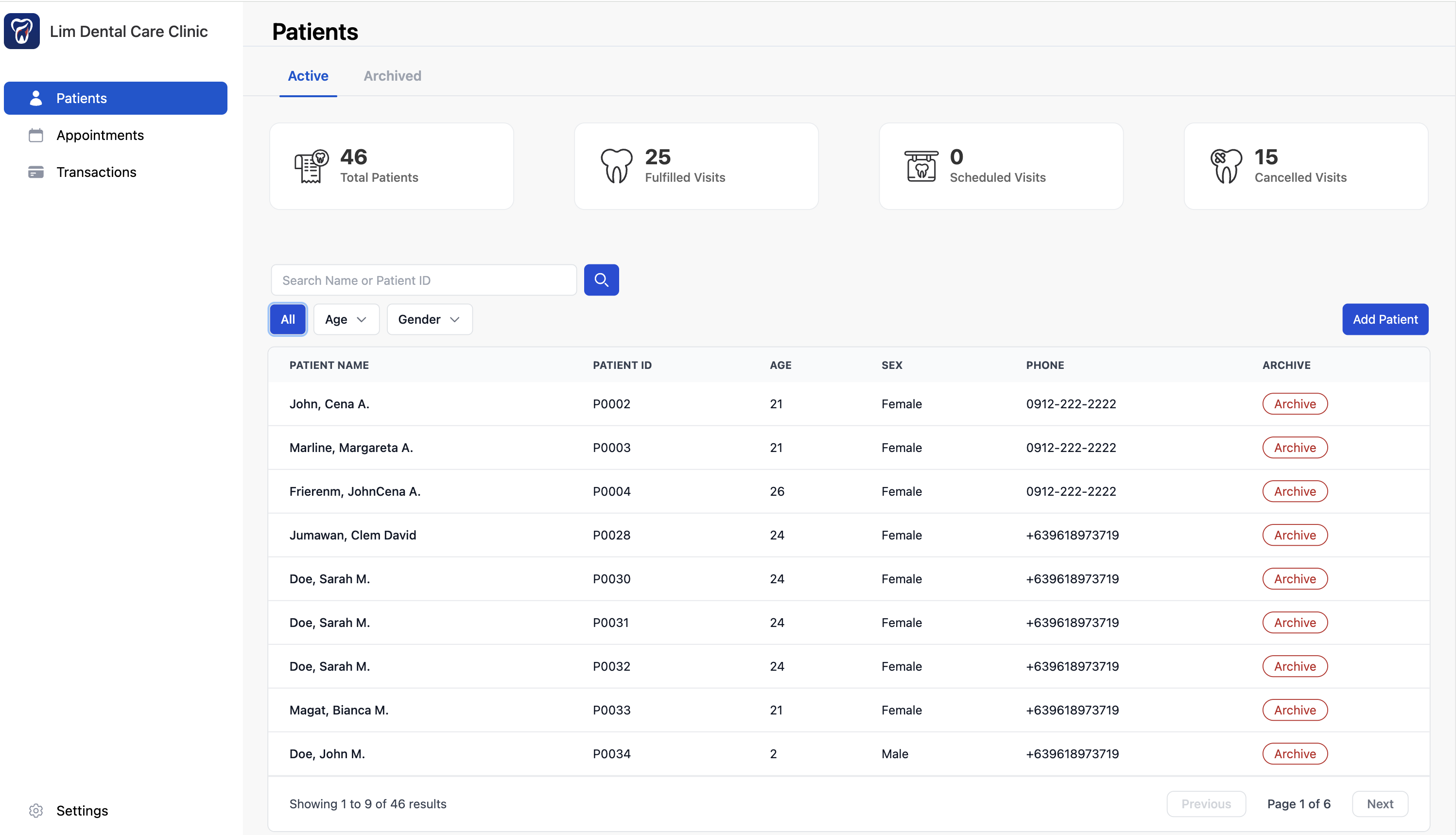
Dental Clinic Management System
Patient record creation, appointment scheduling, transaction management, and automated text messages.
Problem
The problem we solved was that many dental clinics still relied on manual processes for managing patient records, appointment scheduling, and payment tracking, which led to inefficiencies, missed bookings, and data inconsistencies.
Process
We followed a user-centered, design thinking approach to ensure that our solution addressed real-world needs of the dental clinic staff and their patients. This process helped us continuously align our design and development decisions with actual user pain points.
1. Empathize
We began by conducting discovery interviews and informal observation sessions with clinic staff, including receptionists and assistants. This helped us understand their day-to-day frustrations with managing patient records, handling appointments manually, and tracking payments across different tools (or often, on paper). We also considered the patient experience — missed SMS reminders and long intake times often led to frustration on both ends.
2. Define
From our insights, we defined key problem areas:
- Fragmented workflows (separate tools or paper for different tasks)
- Appointment errors (double bookings, no-shows)
- Inconsistent records (handwritten notes, lost history)
- Lack of real-time updates (e.g. no centralized patient database)
We refined these into clear design goals: create a centralized, intuitive system for clinic operations that improves reliability, reduces errors, and saves time.
3. Ideate
Together with our advisor, we brainstormed possible solutions and feature sets. We explored different ways to structure the system — considering modular dashboards, calendar views, form layouts, and automated SMS flows. We prioritized features based on impact vs. complexity, eventually narrowing the scope to patient records, appointment scheduling, transactions, and messaging.
4. Design
Using Figma, we created low-fidelity wireframes to visualize user flows and quickly test layout ideas. After feedback sessions with the clinic, we refined these into high-fidelity interactive prototypes. We focused on clarity, accessibility, and minimizing cognitive load for non-technical users — like receptionists who needed to move fast.
5. Build
We built the platform using React and Tailwind CSS for the frontend, ensuring a responsive and clean user interface. The backend was developed with Django and MySQL, giving us robust database management and API structure. We also integrated SMS functionality using HttpSMS, allowing the clinic to automatically notify patients of their appointments.
Takeaways
- Design with users in mind – Real interviews helped us turn pain points into practical features.
- Balance scope and feasibility – Not all ideas were easy to build; prioritization was key.
- Embrace iteration – Frequent feedback helped us refine the system to meet real needs.
- Adapt under pressure – We quickly pivoted from Twilio to HttpSMS weeks before our deadline.
- Communicate clearly – Working with non-technical stakeholders taught me to explain design choices simply.